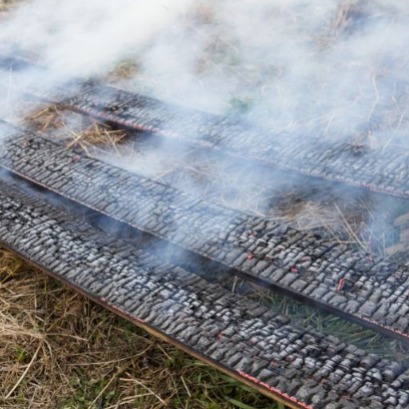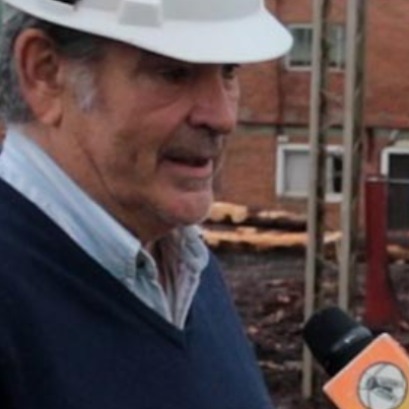
Burned wood: the Japanese technique that beautifies and protects the material
Elegant, ecological and resistant: the wood treated with the millenary technique called Yakisugi challenges the weather and the passage of time. In the world of design and construction, a Japanese ancestral technique is gaining prominence. This is the Yakisugi (also known as Shou Sugi Ban), a method that consists in burning the surface of the wood to make it more resistant and attractive. Although it may seem contradictory, exposing wood to fire gives natural protection against moisture, insects and deterioration over time.
This practice originated in Japan centuries ago and was mainly used in the construction of homes and temples. The traditional process implies burning the outer layer of the wood, brushing it to remove excess carbonization and, in some cases, apply natural oils to seal it. In this way, a wood with a unique texture and color is achieved, in addition to a greater longevity. Yakisugi has several advantages. First, it increases the durability of the wood, making it more moisture resistant and preventing it from rotting easily. In addition, repel -pests like termites and fungi, reducing the need for chemical treatments. Interestingly, it also improves its fire resistance: the burned layer acts as a barrier that retards combustion in case of fire. The application process can be performed in different ways. Traditionally, three tables are tied forming a tube and sets on fire, allowing a homogeneous burning. However, today more controlled methods, such as gas torch or even industrial ovens are used. The result is a dark, elegant wood and with a texture that highlights its natural veins. For this reason, it has become popular in contemporary architecture, especially in facades, coatings and furniture. In addition, by not requiring toxic products for maintenance, it is a sustainable option for those who seek ecological and low environmental impact materials. Despite being an millenary technique, the Yakisugi is still in force and reinvents itself in modern design. Its combination of beauty and functionality makes it an attractive option for both architects and interior designers. Thus, the fire, instead of destroying, becomes the best ally of wood.
IT MAY INTEREST YOU
 They present the Elárbol project in the Ecology Cycle
They present the Elárbol project in the Ecology Cycle
The transmedia initiative reflects the importance of Argentine native flora and focuses on the carob tree as an emblem tree. Today, at 6:�� p.m., at the Argentine Library This Thursday, October 3�, at 6 p.m., the Elárbol project is presented in the Ecology Cycle coordinated by Sergio Rinaldi at the Argentine Library.
 Currents | Las Marías invests 8 million dollars to modernize its sawmill in Virasoro
Currents | Las Marías invests 8 million dollars to modernize its sawmill in Virasoro
The traditional company from Corrientes is moving forward with a million-dollar investment to completely renew its forestry-industrial plant. The new European line, fully automated, will increase productive performance and position the sawmill among the most modern in the country.
 National, regional and sectoral authorities participated in the opening ceremony of ExpoFerretera 2�25
National, regional and sectoral authorities participated in the opening ceremony of ExpoFerretera 2�25
Buenos Aires, October 2�25 – At the opening ceremony they coincided representatives of the entire hardware value chain. There, the main Sector leaders ratified the strategic role that the spaces of meeting and networking. Furthermore, the second day of the event passed with an agenda full of activities.





















